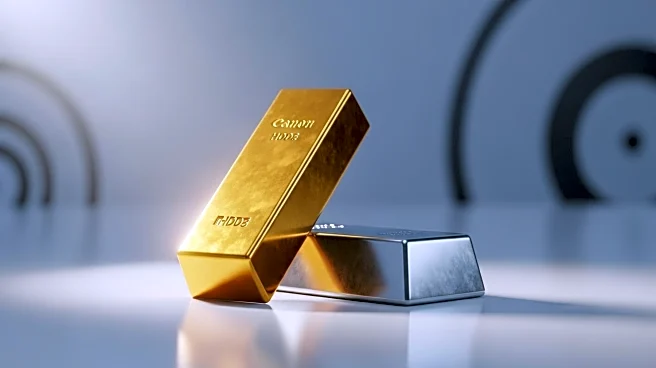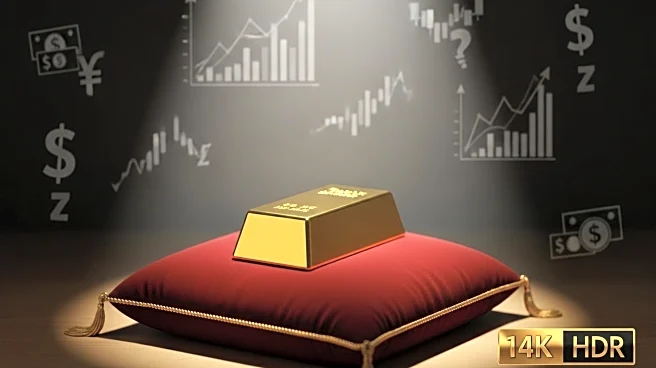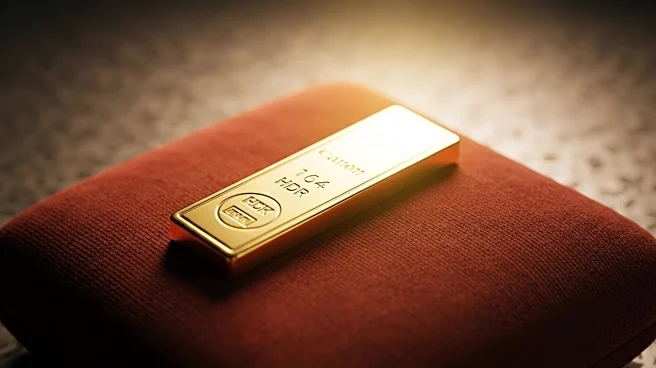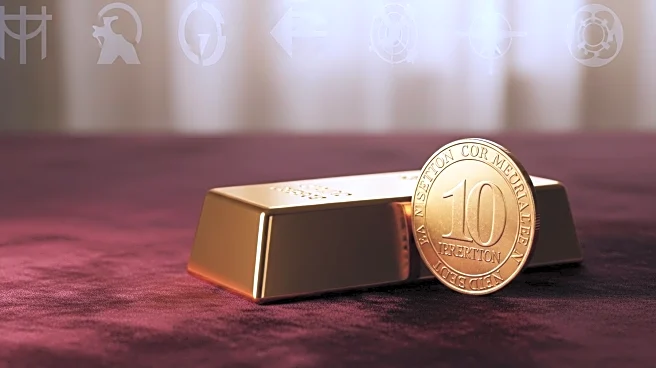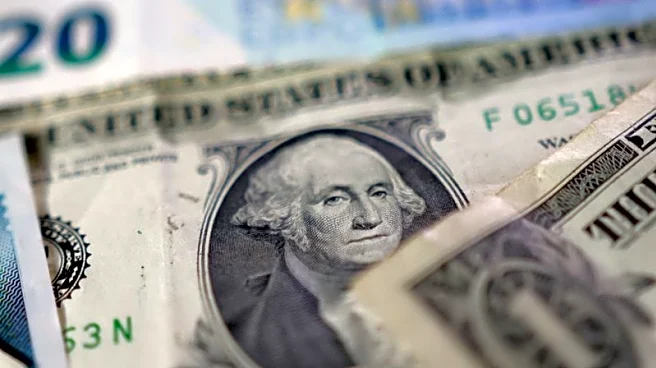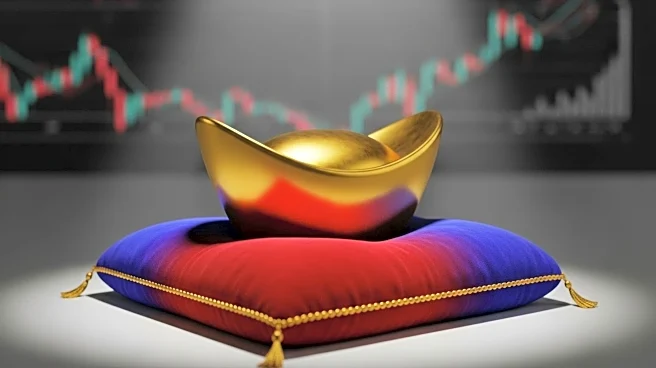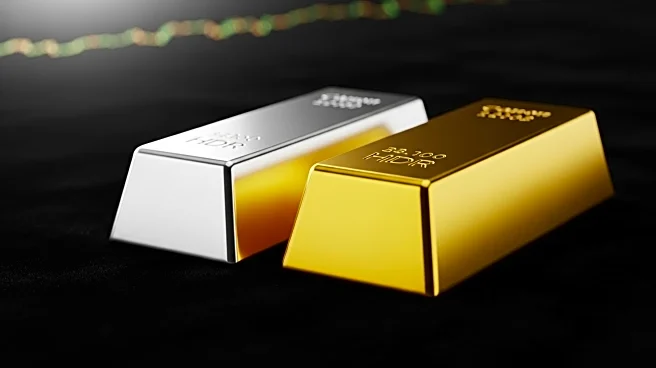What is the story about?
What's Happening?
Gold and silver prices have reached significant milestones, with gold surpassing $4,000 per ounce and silver climbing past $50 per ounce. This surge is driven by a combination of geopolitical risks, economic uncertainties, and expectations of further interest rate cuts by the U.S. Federal Reserve. President Trump's recent warning of possible fresh tariffs on China has accelerated the flight to safe-haven assets, contributing to the rally. Spot gold was up 0.8% at $4,007.39 per ounce, marking an eighth consecutive weekly gain. Silver also rose 2.2% to $50.21 per ounce, benefiting from similar factors driving gold's rally, alongside concerns about supply deficit and rising demand.
Why It's Important?
The rise in gold and silver prices reflects deep-seated concerns among investors about economic stability and geopolitical tensions. As traditional hedges against uncertainty, these precious metals are becoming increasingly attractive, not just as defensive assets but as offensive ones. The rally indicates a lack of trust in the global financial system and a shift towards tangible assets. This trend could impact various stakeholders, including central banks, investors, and industries reliant on these metals. The potential for further U.S. rate cuts and ongoing trade tensions could continue to drive demand for gold and silver, affecting currency values and market dynamics.
What's Next?
Investors are closely monitoring the U.S. Federal Reserve's actions, with anticipated interest rate cuts in October and December potentially influencing further price movements. The geopolitical landscape, particularly U.S.-China trade relations, remains a critical factor. Any escalation in tariffs or trade disputes could further bolster the demand for safe-haven assets. Additionally, the potential collapse of the French government and the ongoing U.S. government shutdown are factors that could contribute to continued market volatility and influence precious metal prices.
Beyond the Headlines
The current market conditions highlight the broader implications of geopolitical and economic instability on global financial systems. The shift towards gold and silver as preferred assets underscores a growing skepticism about fiat currencies and traditional financial instruments. This trend may lead to long-term shifts in investment strategies, with increased focus on tangible assets and commodities. Ethical considerations regarding resource extraction and environmental impact may also gain prominence as demand for these metals rises.
AI Generated Content
Do you find this article useful?
